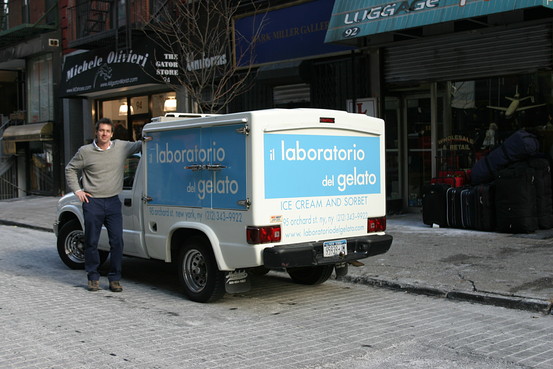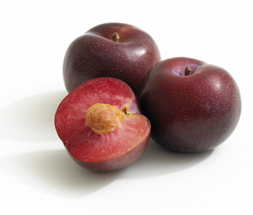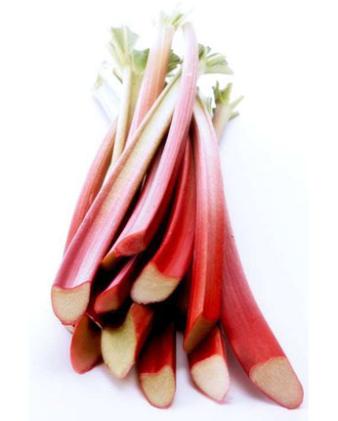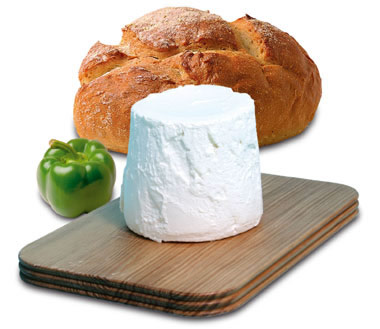:: By William R. Snyder
.jpg) It’s just after sunrise at Il Laboratorio del Gelato on Manhattan’s Lower East Side, and Jon Snyder, guru gelato maker, is ready to start sampling his merchandise: a character-filled list that stretches to more than 200 flavors, including rose petal and cheddar cheese. Snyder has the aw-shucks persona of a 1950s sitcom character, but brewing underneath is an obsessive savant only too willing to concoct serrano pepper or avocado gelati alongside his wholesome chocolate variety.
It’s just after sunrise at Il Laboratorio del Gelato on Manhattan’s Lower East Side, and Jon Snyder, guru gelato maker, is ready to start sampling his merchandise: a character-filled list that stretches to more than 200 flavors, including rose petal and cheddar cheese. Snyder has the aw-shucks persona of a 1950s sitcom character, but brewing underneath is an obsessive savant only too willing to concoct serrano pepper or avocado gelati alongside his wholesome chocolate variety.
He may cut a solitary figure tasting his gelati in the predawn hours, but Snyder’s not alone in his experimental leanings. He is part of a loose network of sweet-tooth artisans that includes industry luminaries like Heather Bertinetti, the executive pastry chef at Alto, Convivio and Marea restaurants in New York City. Of late, they’ve taken the traditionalist’s approach to making quality Italian ice cream and mixed it with fringe ingredients. Bertinetti recently whipped up a golden-beet gelato, while Snyder’s been cultivating a blue cheese. Bertinetti sums up their dictum: “If it can be puréed, it can be made into a gelato flavor.”
Snyder, who makes all 200-plus flavors from memory and feel, drags a small plastic spoon across a tub of ivory-white gelato. “You always have to start with vanilla,” he offers. “It’s an American flavor, not something you see in Europe much. And it’s straightforward—this makes it perfect for gauging the consistency and texture of a gelato, the two most important factors for quality.”
Snyder starts every workday by 5 a.m. On this particular morning, condensation streaks the windows while he reduces a six-pack of Guinness for a beer-infused gelato. Once the Guinness has been converted to syrup, he pours it into a stainless-steel Carpigiani ice-cream machine, along with a full pour of his milk base. The machine (new models of which cost more than $25,000) kicks into gear and starts to whir comfortingly. It takes 15 minutes before seven gallons will be ready to ship.
Moving to a lighter, floral flavor, Snyder offers me a small scoop of honey-lavender gelato. The flower’s ethereal potency is lightened with the honey’s sweetness and carries across the tongue with the cream. It’s like eating a flower cloud.
As implied in the name, Snyder’s store is as much a laboratory as it is a factory. Part of his cachet is soliciting ideas from chefs and then crafting them into frozen desserts. (The Guinness gelato was the result of a chef at a gourmet Irish eatery approaching him to create a beer ice cream.) Marc Meyer, chef and part-owner of the New York restaurants Cookshop, Hundred Acres and Five Points, is a believer in Snyder’s stock. “Right away you can tell that Jon’s gelato is a step above,” Meyer says. “And it’s not because of gimmicky, absurdist flavors. It’s the playfulness and purity.”
A sample of Snyder’s famed olive-oil gelato coats the tongue, and the combination of vegetable and animal fats opens up the taste buds, allowing them to better absorb the base’s sugar. Savory varieties are where innovators like Snyder and Bertinetti can more successfully play with the avant-garde. They’re also a chance to move gelati and sorbet off the dessert menu and onto dinner plates as intermezzos or starters. “I made a tomato sorbet that was served on an olive-oil cake,” Bertinetti says.
Herbs are also a popular addition. “Chocolate is great with anything, but I found it paired really well with thyme,” Bertinetti says. And Snyder regularly makes both rosemary and basil gelati.
.jpg)
Snyder ceremoniously hands me a spoonful of dark-chocolate gelato. It’s his favorite and he’s had success expanding the chocolate core by adding spices, like paprika or chili peppers. The chocolate flavor is deep and energizes the senses, with the cocoa scent wafting up from the spoon, stimulating the nose as much as the mouth.
Not all gelato makers are enamored with exotic flavors. Francesco Realmuto, a Sicilian native who quit the diamond-cutting business six years ago to spawn a minichain called L’Arte del Gelato in New York, thinks gelato should stay true to its ancestry. For him, great gelato comes in Sicilian style, which means less cream, producing an icier product. His native province is revered as the bellwether for frozen milk. “We can’t dilute the region’s influence on process and taste,” Realmuto says. He’ll occasionally experiment, but for him peanut butter is an extreme flavor. “I don’t think we should get too far from tradition.”
The labor and quality Snyder and Realmuto invest in each tub allows them to command top-shelf prices. Containers of Snyder’s chef d’oeuvre sell for about $8.25 for 18 ounces. Realmuto charges $19 per quart. “It’s no secret how to make a great gelato, but to do it right costs a lot of money,” he says.
Ice cream’s origins are a bit murky. Though it’s widely accepted that the Chinese invented the process, the Italians perfected it roughly a century after the Renaissance. (Romans had flavored alpine snow but didn’t actually conduct the physical reaction of freezing dairy.)
In his “Lo scalco alla moderna” (“The Modern Steward”), published around 1692, Antonio Latini gives one of the first documented recipes for cooked milk sorbet, considered a variant on modern ice cream. When ice-cream making reached France, egg yolks were added (which is what still defines French-style ice cream).
In July, Snyder will open a 3,000-square-foot factory and cafe across from New York’s famous Katz’s Deli. But that’s as far as he’ll expand. His brother wanted to franchise an operation in Las Vegas, but Snyder refused. “There’s still bad blood in the family because of it,” he says.
Snyder is willing to convert almost any food item into a masterful, single-flavor gelato (he used bacon last year), but there is one he flat-out rejected: caviar. “I don’t think anyone wants fish churning around in my machines.
Sources: Il Laboratorio del Gelato, New York, 212-343-9922, Laboratoriodelgelato.com; Lartedelgelato.com
What to Drink with Gelato
10-YEAR-OLD LAPHROAIG
SCOTLAND, $52; Chambersstreetwines.com
The iconic smoky, saline Scotch whisky from the exalted Scottish island of Islay goes nicely with basil gelato. First it argues and then it agrees. Think fire and ice, green and red, with this combo, and take it neat for the full effect.
VITTORIO BERA & FIGLI MOSCATO D’ASTI
ITALY, $20; Appellationnyc.com
Pairing this organic entry from the hardworking Vittorio Bera & Figli in Piedmont with strawberries is the classic approach, but for a floral and refreshing slant, try it with a tart blackberry sorbet.
2006 PLAGEOLES MUSCADELLE
FRANCE, $27; Jennyandfrancois.com
Muscadelle is not exactly under the radar—it is a grape allowed in Sauternes—but it is underrated. This one has a mandarin sweetness with a bitter edge and a honeyed finish that happily contrasts with a strong cheddar-cheese gelato.
PRIMITIVO QUILES FONDILLÓN GRAN RESERVA SOLA “1948”
SPAIN, $70; Bowlerwine.com
This oddball wine, with a sweet-and-sour nuttiness, is plunked into a solera system, where it oxidizes, evaporates and is then poured into smaller and smaller barrels, like a Russian doll. Let it play ball with an olive-oil gelato. —Alice Feiring
Recipes
WSJ. Contributing Editor William R. Snyder asked Jon Snyder, owner of Il Laboratorio del Gelato, for some of his favorite gelato recipes.

Plum Sorbet
12 oz. pureed plum
4 Tbsp. sugar
4 Tbsp. water
 Black plums make my favorite sorbet. The sweetness of the pulp, coupled with the tartness of the skin, combine into a terrifically smooth sorbet, when made properly. Fortunately, it’s rather simple.
Black plums make my favorite sorbet. The sweetness of the pulp, coupled with the tartness of the skin, combine into a terrifically smooth sorbet, when made properly. Fortunately, it’s rather simple.
I always recommend filling a home ice cream machine half full—so if it’s a quart machine, only make a pint. This is because overfilling the contents will raise the temperature, and for the best final result, you want a very cold machine. This helps tremendously with the texture.
For a pint: Use two or three plums (depending on the size). Remove pits and process in a blender or food processor. The color from the skin will get incorporated and diffuse into the pulp and create a rich beautiful color. Don’t process fully—the small skin bits add a nice contrast. To the pureed plum, add the sugar and water. Stir well and refrigerate for at least one hour. Pour into ice cream machine.
Rhubarb Gelato
2 stalks fresh rhubarb
5 Tbsp. sugar
1 Tbsp. water
1 cup half-and-half
1 tsp. peach or apricot preserves
 For a pint: Start with two stalks of fresh rhubarb. I prefer the deep red-colored stalks, as they produce an attractive pink-colored gelato. Chop the stalks into two-inch pieces and simmer at a medium heat with three tablespoons of sugar and one tablespoon of water until softened. Puree in a blender or food processor and chill well.
For a pint: Start with two stalks of fresh rhubarb. I prefer the deep red-colored stalks, as they produce an attractive pink-colored gelato. Chop the stalks into two-inch pieces and simmer at a medium heat with three tablespoons of sugar and one tablespoon of water until softened. Puree in a blender or food processor and chill well.
Meanwhile, in a small pan, combine half-and-half, two tablespoons of sugar and the peach or apricot preserves. (The pectin in the preserves will act as a natural emulsifier and greatly increase the smoothness of the final product.) Simmer until hot, but not boiling. Strain to remove preserves. Chill until very cold—the colder, the better. Combine with chilled rhubarb and add to a well-chilled ice cream machine. Churn, freeze and enjoy.
Ricotta Gelato
1 cup half-and-half
4 Tbsp. sugar
1 tsp. peach or apricot preserves
1 cup chilled ricotta
 In a small pan, combine half-and-half, sugar and peach or apricot preserves. Simmer until hot, but not boiling. (As in the above recipe, the pectin in the preserves will act as a natural emulsifier and greatly increase the smoothness of the final product.) Strain to remove preserves. Chill until very cold—the colder, the better. Combine with the chilled ricotta, add to a blender or food processor and blend for a few seconds. Do not overdo it, as you will lose the consistency typical of ricotta. Pour into a well-chilled ice cream machine. Churn, freeze and enjoy.
In a small pan, combine half-and-half, sugar and peach or apricot preserves. Simmer until hot, but not boiling. (As in the above recipe, the pectin in the preserves will act as a natural emulsifier and greatly increase the smoothness of the final product.) Strain to remove preserves. Chill until very cold—the colder, the better. Combine with the chilled ricotta, add to a blender or food processor and blend for a few seconds. Do not overdo it, as you will lose the consistency typical of ricotta. Pour into a well-chilled ice cream machine. Churn, freeze and enjoy.





.jpg)
